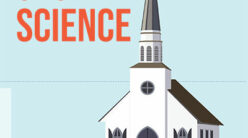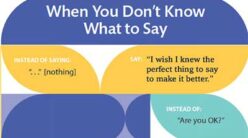 Antidepressants, muscle relaxers, analgesics, and antianxiety medications—nearly a dozen prescriptions were supposed to manage Myrna Scott’s fibromyalgia symptoms. But instead of helping her feel better, the side effects—such as a severely upset stomach and a general feeling of being “out of it”—made her feel even worse.
Antidepressants, muscle relaxers, analgesics, and antianxiety medications—nearly a dozen prescriptions were supposed to manage Myrna Scott’s fibromyalgia symptoms. But instead of helping her feel better, the side effects—such as a severely upset stomach and a general feeling of being “out of it”—made her feel even worse.
So she decided to do something about it. She found ways to control her pain naturally—and that kick-started a lifestyle change that allowed her to drop from 10 prescriptions down to three.
Most of us don’t think twice about popping an aspirin or ibuprofen if we’re in pain—but pain relief doesn’t have to come from a bottle. There are plenty of natural ways we can manage existing pain—and cut pain off before it starts. Here are just a few.
1 Music Therapy
What it is: Structured use of musical experiences to restore, maintain, and improve emotional, psychological, and physical well-being. Music therapy can take many different forms; patients may prefer to listen to music or perform it. Either way, it can be helpful in pain reduction.
“Pain and music travel along the same neural pathways,” says Joanne Loewy, who oversees the Department of Music Therapy at Beth Israel Medical Center in New York City. “In music therapy, we actually show patients ways to work with [their pain] musically. [They may] breathe with meter and harmonic framing, or they might sing.”
How to find a practitioner: The American Music Therapy Association: www.musictherapy.org
2 Exercise
What it is: Planned activity for the purpose of improving health, maintaining fitness, and strengthening the body.
Exercise can be a great way to manage pain—but that doesn’t mean you have to jog to the office or sign up for a high-intensity aerobics class. There are numerous low-impact exercise modalities that not only gently stretch and strengthen your body, but also provide a relaxation response that can also be powerful in managing pain. Simple stretching exercises, for example, can improve flexibility and help with pain control. Try an exercise DVD at home, or check for classes at your local community college or fitness center.
3 Massage Therapy
What it is: The rubbing or kneading of parts of the body to relax the muscles and stimulate circulation.
How to find a practitioner:
American Massage Therapy Association: www.amtamassage.org or (888)THE-AMTA
4 Prayer and Meditation
What it is: A process in which people quiet their minds, allow their thoughts to move beyond distractions, and communicate with God.
Studies at Harvard Medical School have shown that meditation can significantly reduce pain. Prayer can also be used as a way of focusing beyond the pain.
5 Biofeedback
What it is: Training subjects to control usually involuntary functions such as brain activity, blood pressure, muscle tension, and heart rate.
Subjects are connected to computerized sensors that show them when their muscles are tense, for instance, by flashing a light or beeping. The goal is to slow the flashing or beeping by relaxing the muscles; the subjects learn what different levels of tension feel like as they do so. Eventually they can use their newfound skills without being hooked up to a machine.
How to find a practitioner: Biofeedback Certification Institute of America: www.bcia.org
6 Deep Breathing
What it is: Exercises that encourage good breathing habits, which reduce stress and effect relaxation.
“The process of breathing lies at the center of every action and reaction we make or have, and so, by returning to it, we go to the core of our stress response,” writes Donna Farhi in The Breathing Book. “By refining and improving the quality of our breathing, we can feel its positive impact on all aspects of our being.”
To relieve pain, Farhi recommends exhaling (rather than holding your breath) when you anticipate a painful stimulus; stroking a painful area lightly to re-establish a connection with it; and breathing deeply, slowly, and consciously.
Elisabeth Deffner has been published in numerous publications, including the Los Angeles Times and National Geographic Kids. She lives with her family in Orange, California.






